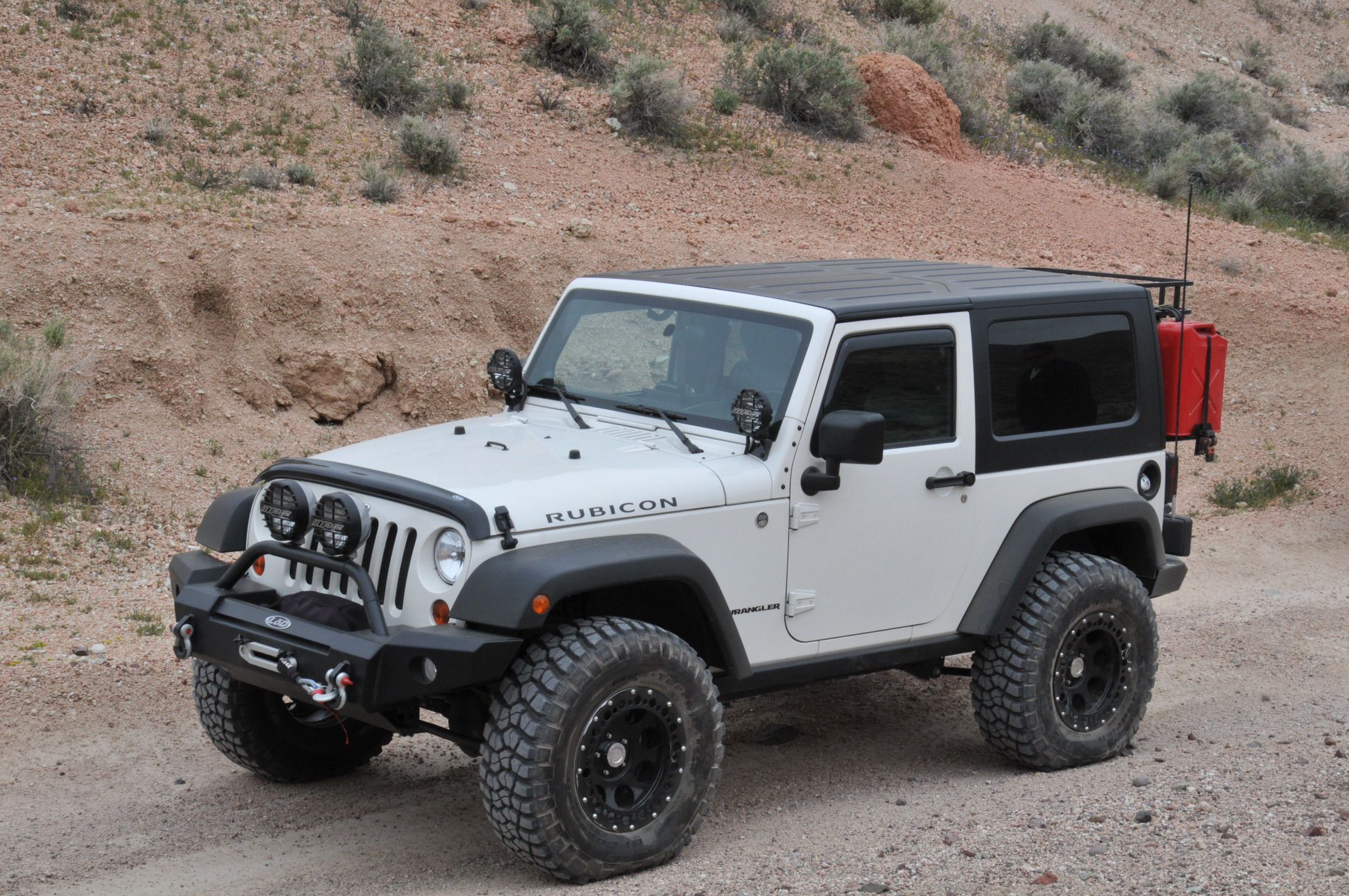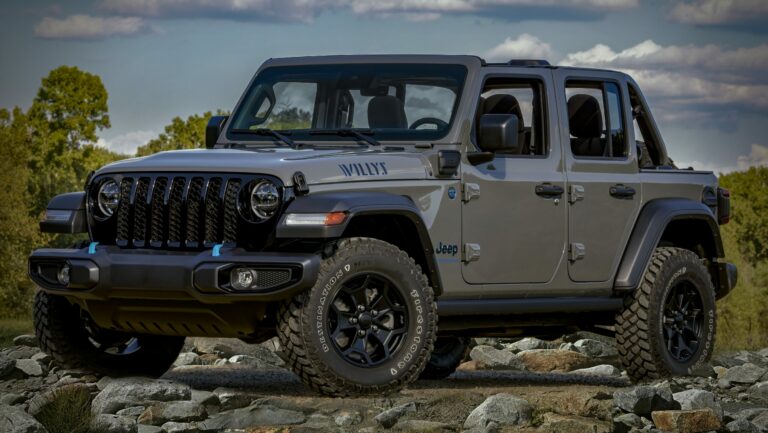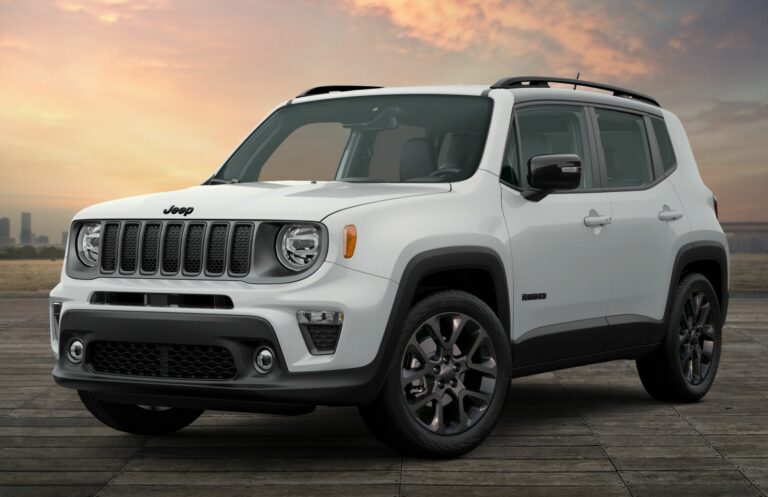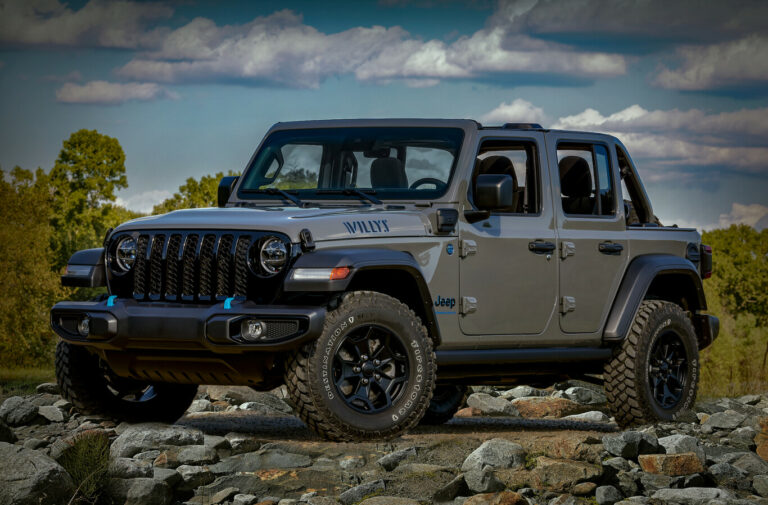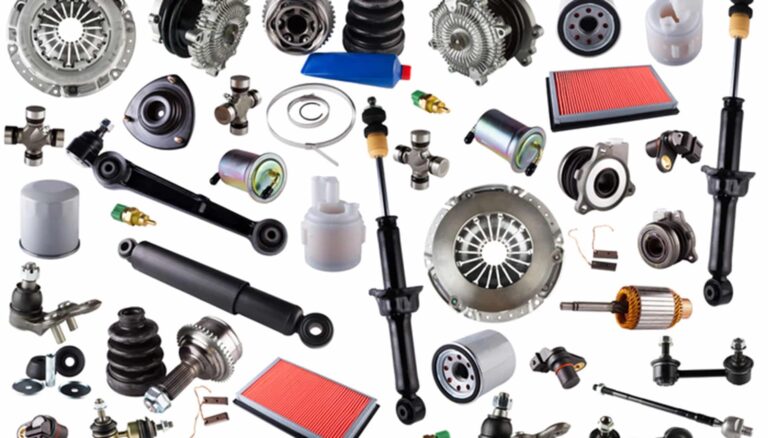Used Jeep JK 35" Tires And Wheels For Sale: Your Ultimate Buying Guide
Used Jeep JK 35" Tires And Wheels For Sale: Your Ultimate Buying Guide jeeps.truckstrend.com
For many Jeep JK Wrangler owners, upgrading to 35-inch tires and an accompanying set of wheels is a rite of passage, a significant step towards enhancing both the aesthetic appeal and off-road capability of their beloved vehicle. While brand new packages can command a hefty price tag, the market for used Jeep JK 35" tires and wheels offers a compelling alternative. This comprehensive guide will navigate you through everything you need to know about finding, inspecting, and purchasing used 35-inch tire and wheel packages for your Jeep JK, ensuring you make an informed and beneficial investment.
The Allure of Pre-Owned: Why Consider Used 35-inch JK Tire & Wheel Packages?
Used Jeep JK 35" Tires And Wheels For Sale: Your Ultimate Buying Guide
The decision to opt for used 35-inch tires and wheels for your Jeep JK is often driven by a combination of practical and financial considerations. The primary draw is significant cost savings. A brand new set of five 35-inch tires and matching off-road wheels can easily run upwards of $3,000 to $5,000, not including installation. Used packages, however, can often be acquired for a fraction of that price, making the upgrade more accessible.
Beyond the financial benefits, buying used can also mean immediate gratification. Unlike waiting for special orders or new stock, used sets are often available for quick pick-up and installation. It’s also an environmentally conscious choice, giving perfectly good components a second life and reducing waste. Many owners upgrade their setups frequently, meaning there’s a consistent supply of quality used tires and wheels that still have plenty of life left.
However, buying used also comes with its own set of challenges, primarily the need for thorough inspection and due diligence. You’re buying "as-is," so understanding what to look for and what questions to ask is paramount to avoid potential headaches down the road.
Decoding the "35-inch" on a Jeep JK: What You Need to Know
When we talk about "35-inch" tires for a Jeep JK, we’re referring to the approximate overall diameter of the tire. This size is incredibly popular among JK owners because it strikes an excellent balance between increased ground clearance, improved traction, and a more aggressive stance, without making the vehicle overly cumbersome for daily driving.
However, fitting 35-inch tires on a Jeep JK is rarely a "bolt-on" affair if your Jeep is stock. Here’s what you generally need to accommodate them:
- Lift Kit: A minimum of a 2.5-inch to 3.5-inch suspension lift is typically required to prevent tire rubbing, especially during off-road articulation. Some fender trimming or flat fender flares might also be necessary, depending on wheel backspacing.
- Wheel Backspacing: This is crucial. For 35-inch tires, wheels with 4.5 inches of backspacing (or less) are recommended. This pushes the wheel out slightly, providing necessary clearance from suspension components and the frame.
- Tire Carrier: The stock tailgate-mounted tire carrier is generally not strong enough for the weight of a 35-inch tire and wheel combo. An aftermarket reinforced tire carrier or bumper-mounted carrier is highly recommended to prevent tailgate damage.
- Re-gearing (Highly Recommended): While not strictly necessary to fit 35s, re-gearing your differentials is strongly advised, especially for JKs with automatic transmissions or lower factory gear ratios (e.g., 3.21). Larger tires effectively change your final drive ratio, reducing acceleration, increasing transmission strain, and hurting fuel economy. Common re-gear ratios for 35s are 4.56, 4.88, or even 5.13, depending on your engine, transmission, and intended use.
- Brake Upgrades: Larger tires increase rotational mass, which can impact braking performance. While not always mandatory, upgrading brake pads, rotors, or even calipers is a common consideration for improved stopping power.
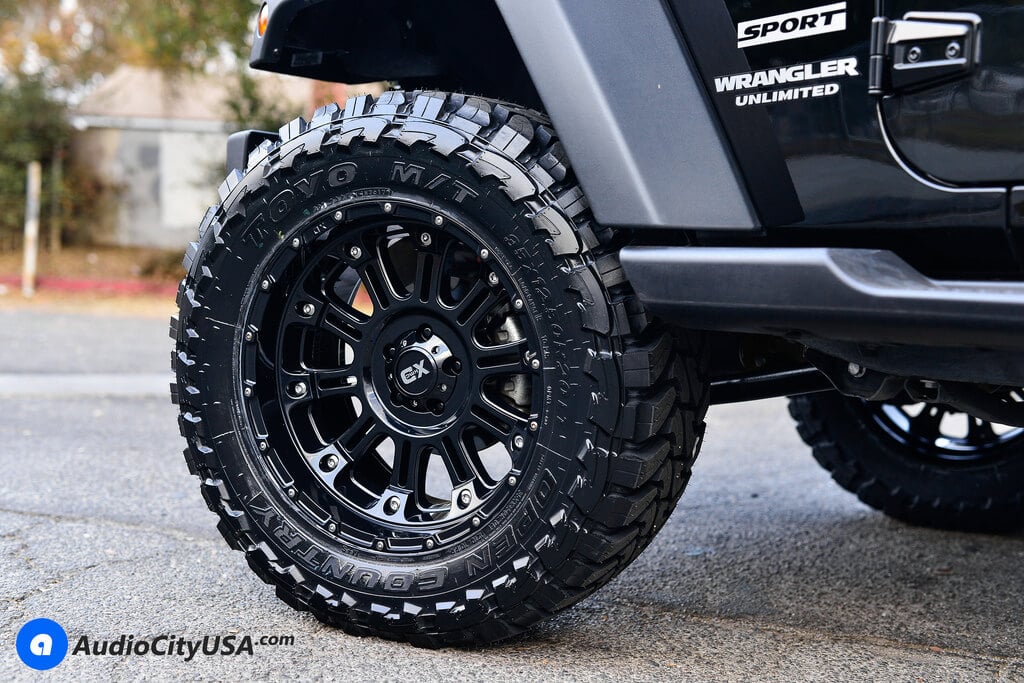

Understanding these accompanying modifications is vital, as they add to the overall cost of the upgrade and should be factored into your budget alongside the tire and wheel purchase.
A Deep Dive into Inspection: What to Look for in Used 35" Tires
When inspecting used tires, your goal is to assess their remaining lifespan, identify any hidden damage, and ensure they are safe for use.
- Tread Depth: This is your primary indicator of remaining life. Use a tread depth gauge (a quarter or penny can also provide a rough estimate). New 35-inch mud-terrain tires often start with 18/32" to 22/32" of tread. Anything below 6/32" is getting close to replacement territory, especially for off-road use. Ensure the wear is even across the tire.

- Uneven Wear Patterns:
- Cupping/Scalloping: Indicates worn shocks or unbalanced tires.
- Feathering: Suggests alignment issues.
- Center Wear: Overinflation.
- Shoulder Wear: Underinflation.
Uneven wear can quickly reduce a tire’s lifespan and signal underlying issues.
- Uneven Wear Patterns:
- Sidewall Condition: The sidewall is critical for a tire’s structural integrity, especially off-road. Look for:
- Cracks (Dry Rot): Small, fine cracks are common in older tires, but deep, widespread cracking indicates severe dry rot and a weakened structure. Avoid tires with significant dry rot.
- Bulges or Bubbles: A bulge on the sidewall indicates internal damage (a broken belt) and is extremely dangerous. Do not buy tires with bulges.
- Punctures or Patches: Ask if the tire has been patched. A professionally repaired nail hole in the tread is generally acceptable, but multiple patches, or patches near the sidewall, are red flags.
- Cuts or Gouges: Significant cuts or gouges, especially on the sidewall, compromise the tire’s strength.
- Age of Tires (DOT Date Code): Tires degrade over time, even if not used. The DOT (Department of Transportation) code, usually a four-digit number stamped on the sidewall, tells you the week and year of manufacture (e.g., "3219" means the 32nd week of 2019). Most tire manufacturers and experts recommend replacing tires after 6-10 years, regardless of tread depth, due to rubber degradation.
- Brand and Model: Research the tire brand and model. Some brands have better reputations for durability, traction, or specific use cases (mud-terrain, all-terrain, hybrid). Ensure the tires are appropriate for your intended use.
Wheels of Fortune: Inspecting Used Rims for Your JK
The wheels are just as important as the tires, contributing to both the look and structural integrity of your setup.
- Bolt Pattern: For Jeep JKs, the bolt pattern is 5×5 inches (or 5x127mm). This is non-negotiable. Ensure the wheels have this exact pattern.
- Backspacing/Offset: As mentioned, for 35-inch tires on a JK, you’ll typically want wheels with 4.5 inches of backspacing or less. Verify this with the seller or measure it yourself if possible. Incorrect backspacing can lead to rubbing issues.
- Damage:
- Cracks: Inspect the wheel thoroughly, especially around the lug holes and spokes, for any hairline cracks. Cracks are a deal-breaker.
- Bends: Spin the wheel if possible to check for wobbles or bends. A bent wheel will cause vibrations and balancing issues. Look for flat spots on the lip.
- Curb Rash/Scratches: Minor cosmetic curb rash is common and generally acceptable if it’s superficial. Deep gouges, however, can weaken the wheel.
- Corrosion: Especially for aluminum wheels, check for signs of pitting or severe corrosion, which can compromise the wheel’s finish and integrity.
- TPMS Sensors: Ask if the wheels include TPMS (Tire Pressure Monitoring System) sensors. If they do, confirm they are compatible with your JK’s year. If not, factor in the cost of new sensors and their installation/programming.
- Hub Bore: While not as critical as bolt pattern or backspacing, ensure the hub bore matches your JK or comes with hub-centric rings to prevent vibrations.
Navigating the Market: Where to Find Used JK 35" Tire & Wheel Deals
The market for used Jeep parts is robust. Here are the best places to look:
- Online Marketplaces:
- Facebook Marketplace: Excellent for local listings, allowing you to easily browse and connect with sellers in your area. Use specific search terms like "Jeep JK 35s," "JK wheels and tires," etc.
- Craigslist: Similar to Facebook, but often requires more diligence to filter out scams.
- eBay: Good for finding specific brands or models, but shipping costs for tires and wheels can be prohibitive, so prioritize local pick-up options.
- Dedicated Jeep Forums & Groups: Websites like JeepForum.com, JK-Forum.com, and various regional or national Jeep Facebook groups often have "For Sale" sections where enthusiasts sell their used parts. These communities are often more knowledgeable and trustworthy.
- Local Off-Road Shops: Some shops take trade-ins or sell used sets they’ve removed from customer vehicles. It’s worth calling around.
- Word of Mouth / Jeep Clubs: Connect with local Jeep clubs. Members often upgrade their setups and sell their old ones to fellow enthusiasts.
Smart Buying Strategies: Questions, Negotiation, and Secure Transactions
Once you’ve found a promising listing, here’s how to proceed:
- Ask Detailed Questions:
- "How many miles are on the tires?"
- "What is the exact tread depth on each tire?" (Ask for pictures with a gauge if possible).
- "What is the DOT date code for each tire?"
- "Have any tires been patched or repaired? If so, where and how?"
- "What are the exact wheel specifications (brand, model, backspacing)?"
- "Are TPMS sensors included? Are they functional?"
- "Why are you selling them?" (Often yields useful information).
- Always Inspect in Person: This cannot be stressed enough. Pictures can hide a multitude of flaws. Bring a tire gauge, a flashlight, and ideally, someone knowledgeable about tires and wheels.
- Meet in a Safe, Public Location: Especially if you’re meeting a stranger, choose a well-lit, public place during daylight hours. If possible, meet at a tire shop where they might be able to put them on a balancer for a quick check (with seller’s permission).
- Negotiate Respectfully: Be prepared to negotiate, especially if you find minor flaws during inspection. Research comparable prices to justify your offer.
- Confirm All Five (or Four) Items Match: Ensure all tires are the same brand, model, and roughly the same wear. The same goes for the wheels. You don’t want a mismatched spare or a wheel with different specs.
- Payment: Use secure payment methods. Cash is common for local transactions, but ensure you have exact change. Avoid sharing personal financial information.
Post-Purchase Pointers: Installation, Setup, and Beyond
Congratulations, you’ve acquired your used 35-inch tire and wheel package! Now for the next steps:
- Professional Installation: While some DIY enthusiasts might tackle this, having tires mounted and balanced professionally is highly recommended. Proper balancing is crucial to prevent vibrations and ensure even wear.
- Alignment: After installing larger tires and potentially a lift, a professional alignment is essential to correct steering geometry and prevent premature tire wear.
- Re-gearing Consideration: If you haven’t already, now is the time to seriously consider re-gearing your differentials. Driving with oversized tires on stock gears will lead to sluggish performance, excessive transmission heat, and poor fuel economy.
- Fender Clearance: Even with a lift, some rubbing might occur during full steering lock or suspension articulation. Be prepared to trim inner fender liners or invest in flat fender flares for maximum clearance.
- TPMS Reprogramming: If your new wheels came with sensors, they might need to be programmed to your JK. If you bought new sensors, they definitely will.
Pricing Guide: Understanding the Value of Used JK 35" Tire & Wheel Packages
The price of used 35-inch tire and wheel packages for a Jeep JK can vary widely based on several factors: tire brand and model, tread depth, tire age, wheel brand and condition, and whether TPMS sensors are included. The table below provides a general range, but always remember to inspect thoroughly.
| Component Type | Tire Brand/Model (Example) | Tread Depth % | Tire DOT Age (Years) | Wheel Brand/Material (Example) | Wheel Condition | TPMS Included? | Estimated Price Range (Set of 5) | Notes |
|---|---|---|---|---|---|---|---|---|
| Premium Set (Newish) | BFGoodrich KM3 / Nitto Ridge Grappler | 80-95% | 1-2 | Method Race / Fuel Off-Road (Alloy) | Excellent | Yes | $2,000 – $3,500 | Minimal wear, no damage, ready to bolt on. Often from recent upgrades. |
| Good Condition Set | Goodyear Duratrac / Falken Wildpeak AT3W | 60-75% | 2-4 | OEM Take-offs / Aftermarket Alloy | Good | Sometimes | $1,200 – $2,000 | Even wear, minor cosmetic flaws, plenty of life left. |
| Budget/Workhorse Set | General Grabber / Less Popular MT | 40-55% | 4-6 | Steel Wheels / Older Aftermarket | Fair | Rarely | $700 – $1,200 | Visible wear, may have some patches or curb rash. Good for budget builds. |
| Salvage/Spare Only | Any Brand | < 40% | 6+ | Any Material | Poor | No | $300 – $700 (for a set of 4/5) | High wear, possible dry rot/damage. Best for trail spares or very temporary use. |
Note: These prices are estimates and can fluctuate based on region, seller urgency, and specific brand/model popularity.
Frequently Asked Questions (FAQ)
Q1: Do 35-inch tires fit a stock Jeep JK?
A1: No. A stock Jeep JK will experience significant rubbing with 35-inch tires, especially during turns or suspension compression. A minimum of a 2.5-inch to 3.5-inch lift kit is generally required, along with appropriate wheel backspacing.
Q2: What is the ideal lift size for 35-inch tires on a JK?
A2: Most owners find that a 2.5-inch to 3.5-inch suspension lift provides adequate clearance for 35s. The exact lift height may depend on your specific wheel backspacing and whether you’re using flat fenders.
Q3: Do I need to re-gear my JK for 35-inch tires?
A3: While not strictly necessary to fit them, re-gearing is highly recommended. Larger tires put more strain on your drivetrain, reducing power, increasing transmission temperatures, and negatively impacting fuel economy. Common re-gear ratios for 35s are 4.56, 4.88, or 5.13.
Q4: How do I check the age of a used tire?
A4: Look for the DOT (Department of Transportation) code on the tire’s sidewall. The last four digits represent the week and year of manufacture (e.g., "3219" means the 32nd week of 2019).
Q5: What is wheel backspacing and why is it important for 35s on a JK?
A5: Backspacing is the distance from the mounting surface of the wheel to the wheel’s inner edge. For 35-inch tires on a JK, you typically want 4.5 inches of backspacing or less. This pushes the wheel further out from the hub, providing critical clearance from suspension components and the frame to prevent rubbing.
Q6: Can I use my old TPMS sensors with used wheels?
A6: Possibly, if they are compatible with the new wheels and your JK’s year. However, it’s often easier to get new TPMS sensors if the used wheels don’t come with them, or if the included ones are old/damaged. They will need to be programmed to your Jeep.
Q7: Are patched tires acceptable to buy?
A7: A single, professionally repaired puncture in the tread area is generally acceptable. However, multiple patches, or any repairs near the sidewall, are red flags. Sidewall repairs are generally not considered safe.
Conclusion: Your Path to an Upgraded JK Awaits
Purchasing used 35-inch tires and wheels for your Jeep JK Wrangler is an excellent way to achieve that aggressive look and enhanced off-road capability without breaking the bank. By diligently inspecting the tires for tread depth, age, and damage, and the wheels for structural integrity and proper fitment, you can find a fantastic deal that will transform your Jeep. Remember to factor in the necessary accompanying modifications like a lift kit and potentially re-gearing. With careful research and smart buying practices, you’ll soon be enjoying the elevated stance and improved performance that a quality set of 35s brings to your Jeep JK, ready for any adventure.

